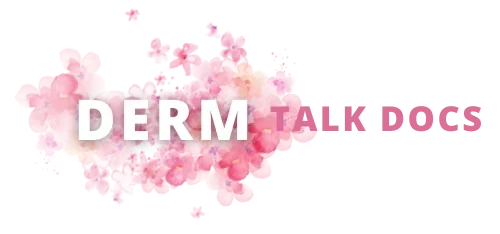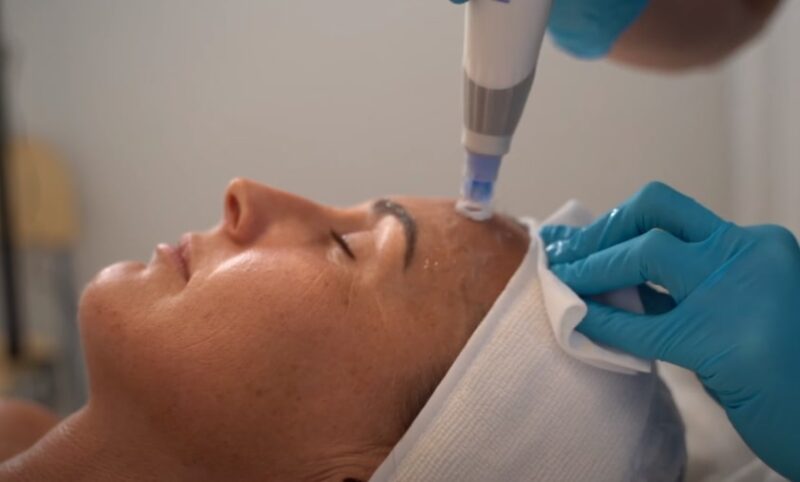As we age, the loss of collagen leads to visible signs of aging such as fine lines, wrinkles, and sagging skin. But the good news is, with advancements in dermatology, there are numerous effective anti-aging skin treatments that can combat these issues. Here are the best anti-aging methods.
Key Takeaways
- A variety of advanced skin treatments, including Genesis Laser Rejuvenation, Plenhyage XL, Retinol, Chemical Peels, Microneedling, and Hyaluronic Acid Fillers, provide many options to fight signs of aging. Each method has its own unique benefits and factors to keep in mind.
- The success of these treatments can differ from person to person. It’s important to talk to skin care experts to find the best anti-aging solution that fits your specific skin needs.
Genesis Laser Rejuvenation
Genesis Laser Rejuvenation is a non-invasive treatment that employs laser light to target the dermis, the deeper layer of the skin where collagen is produced. This laser heats the dermis, causing new collagen production that continues over time, leading to a more even skin tone, tighter pores, and smoother skin texture.
Duration and Convenience
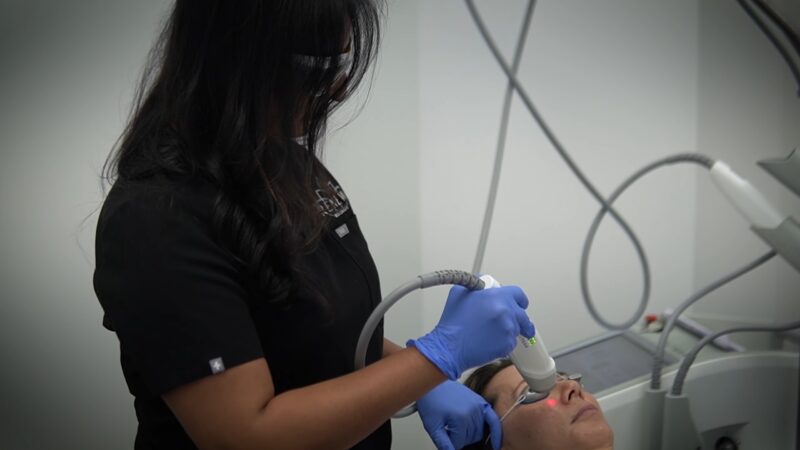
Typically, each session lasts about 30 minutes, with no downtime required. This has led to it being called a “lunch break procedure.”
Average Cost
The cost ranges between $275 and $400 per session. Usually, 3 to 6 sessions are recommended for optimal results.
Safety and Side Effects
- Risks: Laser Genesis is a low-risk procedure. The most common side effect is temporary redness.
- Precautions: It is advised for pregnant women to avoid the treatment.
Plenhyage XL

Plenhyage XL is an injectable skin treatment designed to improve skin quality, thickness, hydration, and promote new collagen formation. It comprises polymerized polynucleotides, which are DNA molecules that stimulate fibroblasts for tissue repair, encourage cell turnover, improve elasticity, and boost collagen production.
These properties make it effective for treating various skin concerns, including areas such as the neck, décolletage, inner arms, thighs, and knees.
PLENHYAGE XL offers two strengths – Strong 2.5% and Medium 2.0% high molecular weight polynucleotides, catering to different client needs. The Strong formulation is for mature skin or significant damage, while the Medium formulation is for moderately damaged skin, mild conditions, and early signs of aging.
Both can be used on the face, neck, and décolletage, with the Medium strength also suitable for the peri-orbital area. It targets fibroblasts and stem cells, respecting the biological time of tissue formation.
Retinol Treatments
Retinol treatments are widely recognized in the skincare world for their profound impact on aging skin. Retinol, a form of Vitamin A, is known for its powerful ability to boost skin renewal and repair.
It works by stimulating collagen production and accelerating cell turnover, leading to smoother, more radiant skin. These treatments are particularly effective against common signs of aging, such as fine lines, wrinkles, and uneven skin texture.
Regular use of retinol has been associated with improved skin texture and a noticeable reduction in the appearance of wrinkles and age spots. It’s also beneficial for acne-prone skin due to its pore-clearing properties.
“Retinol, a superstar in skincare, wasn’t originally developed for beauty purposes. It was initially used as an acne treatment in the 1960s before its remarkable anti-aging properties were discovered.”
However, introducing retinol into a skincare routine should be done cautiously. Starting with lower concentrations and gradually increasing the frequency can help minimize potential irritation.
It’s essential to note that retinol can make the skin more sensitive to the sun, so applying a broad-spectrum sunscreen is crucial when using these products.
Chemical Peels
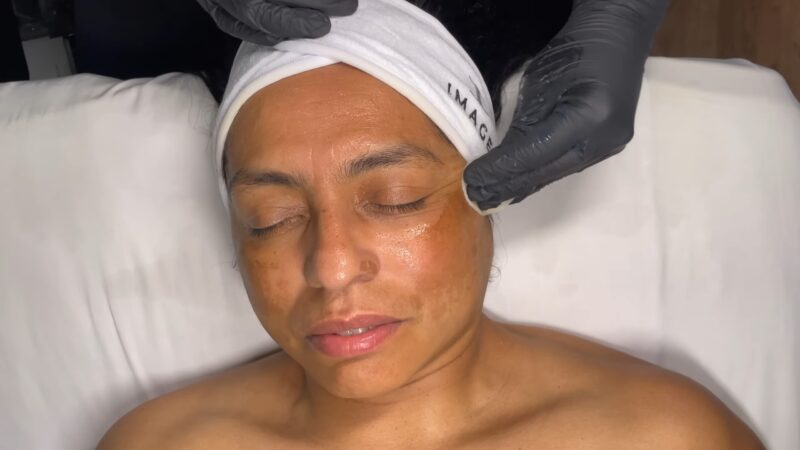
Chemical peels, a popular anti-aging treatment, involve applying a chemical solution to the skin to remove its top layers, thus revealing fresher, more youthful skin underneath. The effects vary depending on the type and depth of the peel, ranging from light to deep.
- Light chemical peels: Often called “lunchtime peels,” and represent the mildest form. They use substances like glycolic or salicylic acid and primarily target the outermost layer of skin. These peels are suitable for treating fine wrinkles, acne, uneven skin coloring, or dry, sun-damaged skin. They offer subtle improvement over time and are typically repeated in a series. Recovery from a light peel can be quite quick, usually taking between a few hours to a few days, with minimal downtime.
- Medium chemical peels: They go a bit deeper, targeting the outer layer and the upper part of the middle skin layer. They often use trichloroacetic acid, sometimes combined with glycolic acid. Medium peels are effective against uneven or moderate skin discoloring, age spots, acne scarring, and moderate wrinkles. The recovery for medium peels may take a week or more and may involve some downtime.
- Deep chemical peels: Provide the most dramatic results, penetrating down to the lower middle layer of the skin. They use carbolic acid (phenol) and are suitable for treating moderate lines and wrinkles, extensive sun damage, deep acne scars, and certain precancerous growths. Recovery time is longer, and such peels often require pretreatment for up to eight weeks. A deep chemical peel is generally a one-time treatment for the face and involves significant downtime.
Furthermore, consulting professionals in this area is essential. It will help you learn more about the process, but also to make it clear about expectations. According to MayoClinic:
“A light chemical peel improves skin texture and tone and lessens the appearance of fine wrinkles. The results are subtle but increase with repeated treatments. If you have a medium chemical peel, treated skin will be noticeably smoother. After a deep chemical peel, you’ll see a dramatic improvement in the look and feel of treated areas. Results may not be permanent. Over time, age and new sun damage can lead to new lines and skin color changes. With all peels, the new skin is temporarily more sensitive to the sun.”
Microneedling
The Cleveland Clinic states that “Microneedling is a minimally invasive procedure using thin needles. The procedure can help reduce the appearance of skin concerns such as acne scars, stretch marks or wrinkles. Most people get microneedling for cosmetic purposes, but it can also help with some medical conditions.”
Who Can Benefit from Microneedling?
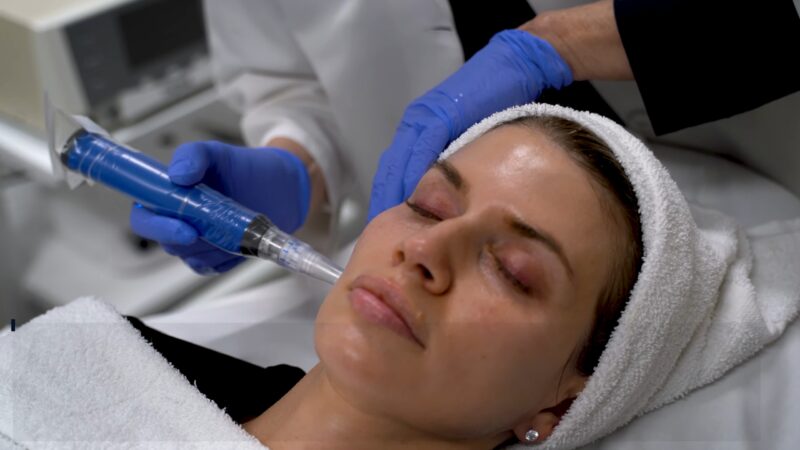
Microneedling is ideal for those looking to improve skin conditions such as enlarged pores, fine lines, loose or thin skin, mild scars from acne or burns, skin discoloration, and stretch marks. It’s also used for medical purposes, including treating alopecia areata (an autoimmune hair loss condition) and hyperhidrosis (excessive sweating).
Who Should Avoid Microneedling?
It’s not suitable for everyone. Avoid it if you have active acne, blood disorders, are undergoing cancer treatments, have frequent skin rashes or cold sores, a keloidal tendency, abnormal moles or skin tags, or conditions like eczema or psoriasis.
More About the Procedure
The procedure involves cleansing your skin and applying a numbing cream. A hand-held roller or an electric tool with tiny needles creates micro-wounds in the skin. The length of the needles, which can range from 0.5 to 2 millimeters, determines the depth of skin penetration. This process can take from 15 minutes to a few hours.
Hyaluronic Acid Fillers
Hyaluronic Acid (HA) fillers are widely used for their safety and effectiveness in anti-aging treatments. HA is a natural component found in the body, notably in the skin’s connective tissue, making it well-suited for cosmetic applications.
Uses
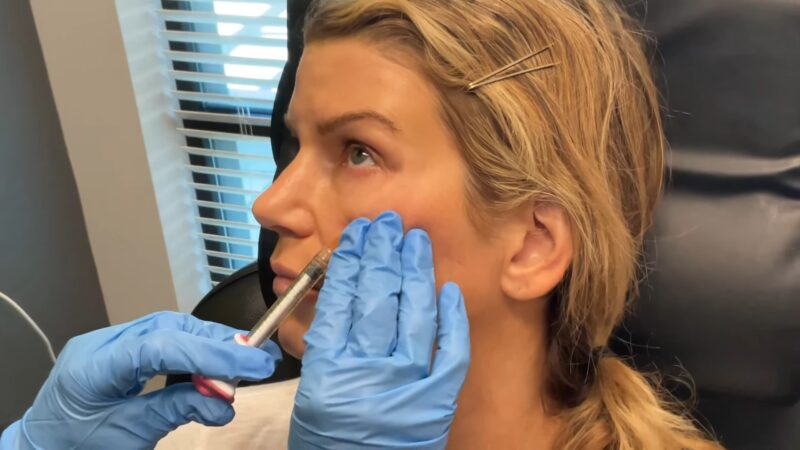
These fillers are versatile and used for various purposes, such as enhancing facial contours, smoothing wrinkles and lines, and adding volume to areas like the cheeks, lips, and jawline. They can also address skin issues like depressed scars and volume loss in the hands and under-eye areas.
The same procedure can be used as treatment for skin diseases, like it is the case for ASIA Syndrome. There were many cases where this method proved to be much better when compared to other treatments.
Duration
The effects of HA fillers typically last between 6 to 18 months, depending on the treatment area. For instance, lip augmentation results last about 6 to 9 months, while cheek augmentation effects can last up to 24 months.
Side Effects
While generally safe, side effects can occur, including discomfort, redness, swelling, and bruising. More serious but rare side effects include infections, nodules, and, in extreme cases, tissue damage if injected into blood vessels.
Cost
The cost of HA fillers varies based on the amount used and geographical location but typically ranges from $600 to $1,000 per syringe.
Ultherapy
Ultherapy is a non-invasive treatment using ultrasound energy to stimulate collagen production in deeper skin layers.
Effectiveness
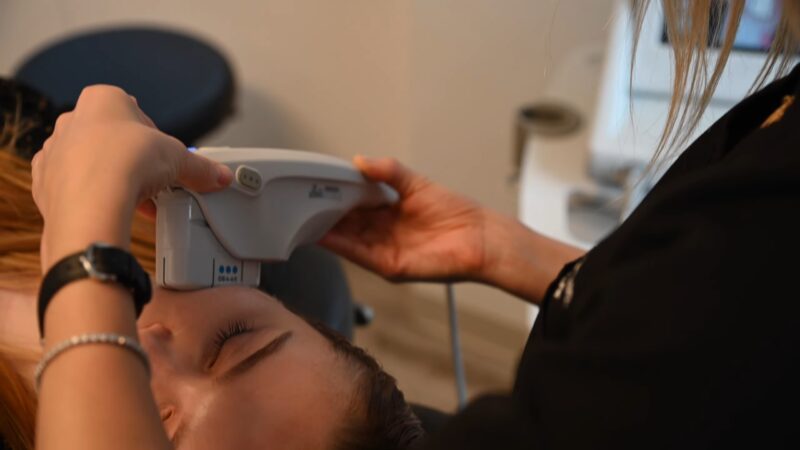
This procedure is particularly effective for lifting and tightening skin on the neck, chin, and brow. It can also improve lines and wrinkles on the upper chest.
Procedure
Ultherapy targets the deeper layers of the skin without disrupting the surface. It’s generally considered safe, but as with any medical procedure, there may be risks and side effects.
Recovery and Results
Unlike more invasive procedures, Ultherapy doesn’t require a lengthy recovery time. The results gradually appear as the collagen production increases over time.
FAQs
Is it OK to use hyaluronic acid every day?
Yes, for most people, it is perfectly safe and beneficial to use a product containing hyaluronic acid every day. However, like any skincare product, overuse of hyaluronic acid can cause more harm than good. For example, it can make the skin require more moisture than usual, which can worsen the look of the skin.
What is the best face serum?
There is no definitive answer to this question, as different face serums may suit different skin types, concerns, and preferences. However, some of the factors to consider when choosing a face serum are the active ingredients, the texture, the absorption, and the value. Some of the popular ingredients in face serums are vitamin C, hyaluronic acid, niacinamide, retinol, and antioxidants.
Is hyaluronic better at night or morning?
Hyaluronic acid can be used both in the morning and at night, depending on your skincare routine and needs. In the morning, hyaluronic acid can help hydrate and plump the skin, as well as protect it from environmental stressors. At night, hyaluronic acid can help repair and replenish the skin, as well as lock in the moisture from other products.
Do fillers work after 40?
Yes, fillers can work for people of any age who want to restore volume and structure to their face. Fillers can help smooth lines, lift cheeks, plump lips, and rejuvenate the hands. However, older skin may have less elasticity, more laxity, and slower metabolism, which can affect the results and duration of fillers. Therefore, a conservative and customized approach is best.
Last Words
The quest for maintaining youthful skin has led to the development of various effective anti-aging treatments. From Genesis Laser Rejuvenation, known for its non-invasive approach and quick sessions, to Plenhyage XL injections that promote collagen formation and skin quality, each method offers unique benefits.
Each of these treatments comes with its own set of considerations regarding suitability, recovery time, potential risks, and costs. The effectiveness of these methods varies based on individual skin types and conditions.
Hence, it’s crucial to consult with a dermatologist or skincare professional to choose the best treatment plan for individual needs.
In the end, we also have to mention that certain habits, along with various factors can also lead to faster or slower aging. One of them is related to ingredients and products you use in your daily skin care routine.
